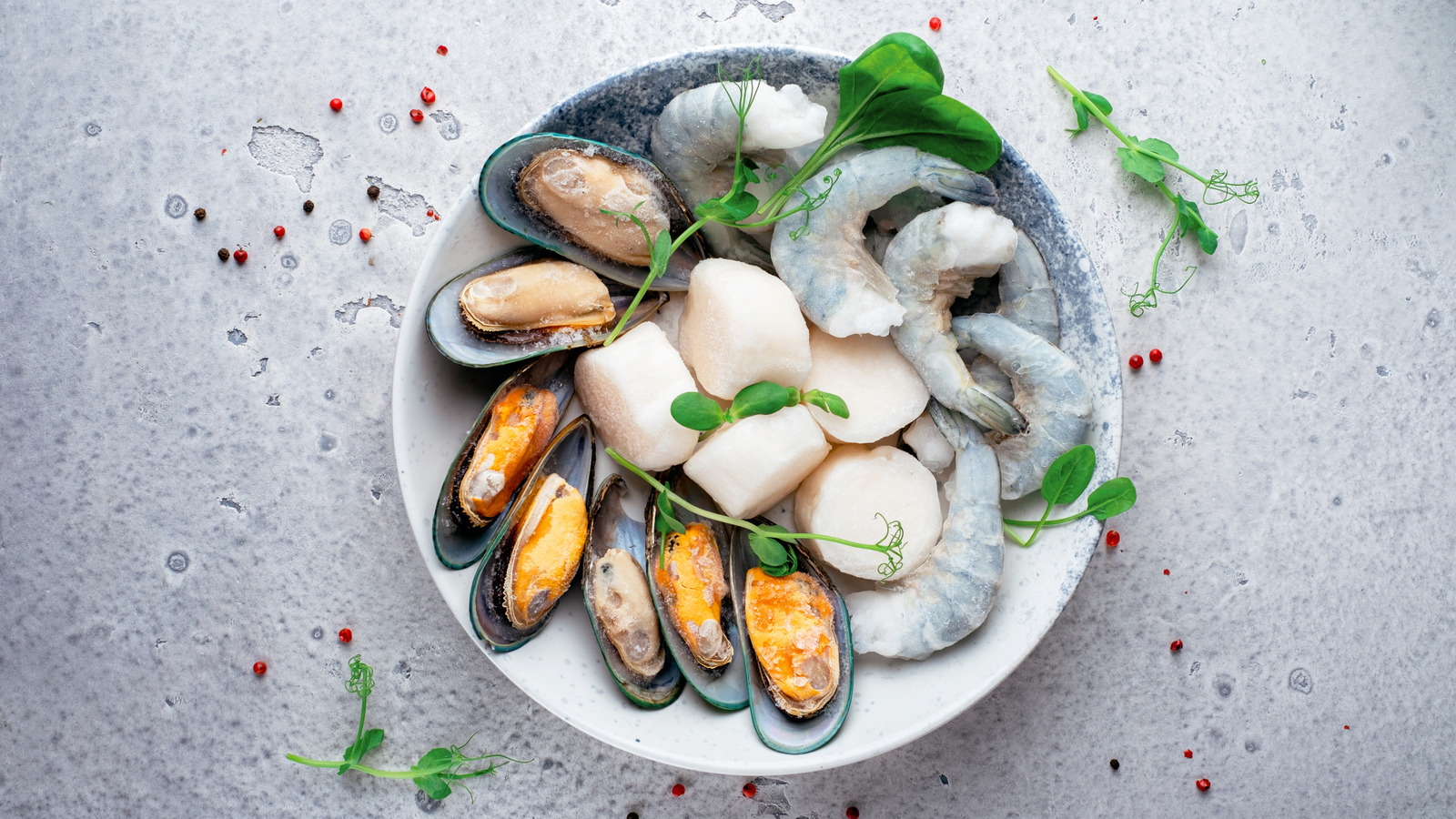Buying high-quality seafood is possible, even if you're miles and miles away from the closest ocean. If that's the case, you might be purchasing your seafood frozen — not that this is a bad thing. In fact, , and you're often getting a better product when you're getting seafood from the freezer section.
But in order to get the freshest frozen seafood, The Takeout spoke to Kory Foltz, director of culinary at in Charlotte Harbor, Florida, who told us to avoid buying seafood with visible ice crystals on it. "Large ice crystals can mean the seafood thawed and refroze, which affects texture and may signal poor handling," Foltz told us. Ice crystals are a way .

Whether this is because the seafood has been stored for too long, improperly packaged, or accidentally thawed and refrozen, these are all good reasons to avoid purchasing it. Safety-wise, frozen seafood that thawed during transportation could potentially have spoiled during that period, so it's best to avoid any products with lots of ice inside the package. How to avoid freezer burnt seafood Freezer burn happens when seafood is not properly stored and the moisture from the fish itself moves to the surface and refreezes.
While (as long as it stayed below 0 degrees Fahrenheit throughout transportation and storage), Kory Foltz warned us that it has "a tough texture and bland or off flavors." Since freezer burn is essentially dehydration due to air exposure, your seafood's texture will inevitably be dry and overly firm. The loss of quality is also irreversible, so if you're freezing fresh seafood at home, it's best to do what you can to prevent freezer burn.
Foltz gave The Takeout this advice: "Freeze seafood in airtight, vacuum-sealed bags or tightly wrapped in plastic and foil, and store at 0 degrees Fahrenheit or below. Remove as much air as possible to prevent freezer burn." For both fresh and frozen products, keeping the packaging airtight is crucial, since air exposure is what allows freezer burn to attack.
If you're working with larger portions of fish or seafood, it's also a good idea to wrap it in individual portions. This way, each piece is well protected. With frozen seafood specifically, make sure it stays continuously frozen, as thawing and refreezing can cause freezer burn.
Recommended.
Food

The Simple Seafood Red Flag You Shouldn't Ignore

Buying high-quality fish and seafood at the supermarket shouldn't be a mystery. Here is how you can tell if it is actually fresh, according to an expert.














